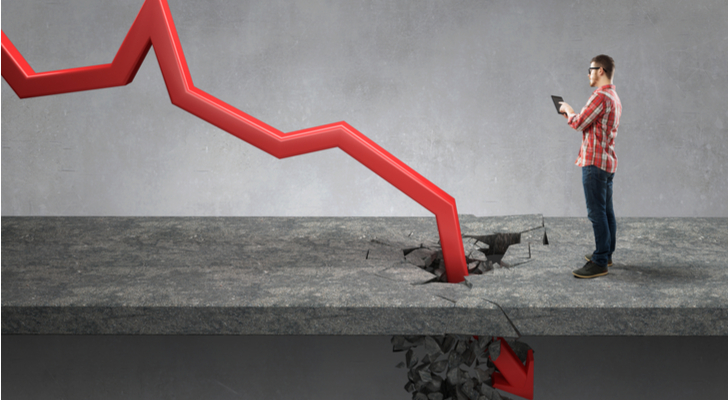I’ve been writing for months to be careful about this market and to carefully consider your risk profile, as sooner or later we would have a stock market correction. The past few days have probably felt more like a market crash, especially if you listen to the financial media.
Hopefully, you also have learned something about risk, because risk is everything. Most investors take far too much risk, and on days like Monday, they suddenly realized it and made rash emotional decisions.
So if this was your first real mini market crash, I hope you understand a bit more about why I preach about having a long-term diversified portfolio with a sizable position in non-correlated investments. The Liberty Portfolio, my stock advisory newsletter, which takes this exact approach was down only 2% on Monday versus the market’s 4.1%.
So how did you feel on Monday during this quasi crash? Did you just go about your day and shrug at the stock market correction? Chances are your risk profile is about right, and you understand the importance of investing for the long term.
Were you panicked? Concerned? Glued to CNBC? Did you fear a true market crash was about to happen? Then chances are you do not have the risk profile you thought you did and are probably overinvested in short-term stocks.
So here’s what you need to do, and it’s what The Liberty Portfolio is built to do.
First, you must have at least a ten-year time horizon if you are investing money in the markets. There is only one ten-year-rolling period where the Dow Jones Industrial Average lost ground, and that was during The Great Depression. If you look at rolling 20- and 30-year periods, the Dow has always delivered positive returns.
If your horizon isn’t that long, the markets are not for you.
If you do have that time horizon, the next move is to realize that everything you’ve been told about the rate of inflation is wrong. It is not 3%. It is closer to 10%. That means, in order to maintain your standard of living, your portfolio must return 10% annually. But that means nothing in a vacuum, if there is no factoring in risk.
The next move is to realize that everything you’ve been told about market risk is wrong. Investing in the market with some arbitrary allocation of X% stocks and Y% bonds means nothing. For starters, it’s arbitrary. Investing isn’t one-size-fits-all. Most of all, it tells you nothing specific about risk.
Risk is evaluated by determining the standard deviation of an investment. That data is available for some securities, like ETFs, but not all. I won’t bore you with details, but your portfolio should aim to have an average annual return of 10%, and standard deviation of no more than 8. That’s what The Liberty Portfolio aims for, and I accomplish it using non-correlated investments — investments that do not move in lock-step with the overall market.
Here’s how a portfolio of 50% stocks invested in the S&P 500 via the SPDR S&P 500 ETF (NYESARCA:SPY) and 50% invested in the iShares Core US Aggregate Bond ETF (NYSEARCA:AGG) has performed over the past ten years. The SPY has had an average annual return of 9.7% … but a standard deviation of 15. The AGG has an average annual return of 3.6% with a standard deviation of 3.3.
What this means is that, in any given year, that “model portfolio” has a 95% certainty of returning between -18% and 25%-plus.
Do you consider that portfolio to be “safe”? Look at the huge range it could have? And this is just the probability. What if your portfolio lost 18% two years in a row? You’d be down 36% and very unhappy.
However, a portfolio like what The Liberty Portfolio aims for has a 95% certainty of returning between -6% and 26%-plus. Which portfolio would you prefer?
Let’s parse it out further. Let’s suppose you have a million dollars, and each portfolio falls by the maximum amount two years in a row. The “model portfolio” would be down to $672,000 after two years. How would you feel about that?
The other portfolio would be down to $884,000. How would you feel about that?
Then we get two years of maximum upside for each. The “model” portfolio ends at $1.24 million. The other portfolio ends at $1.4 million. Now how do you feel?
Hopefully, this gives you food for thought as we ride a suddenly volatile market that may or may not end with a true market crash.
Lawrence Meyers is the CEO of PDL Capital, a specialty lender focusing on consumer finance and is the Manager of The Liberty Portfolio at www.thelibertyportfolio.com. He does not own any stock mentioned. He has 23 years’ experience in the stock market, and has written more than 2,000 articles on investing. Lawrence Meyers can be reached at TheLibertyPortfolio@gmail.com.

